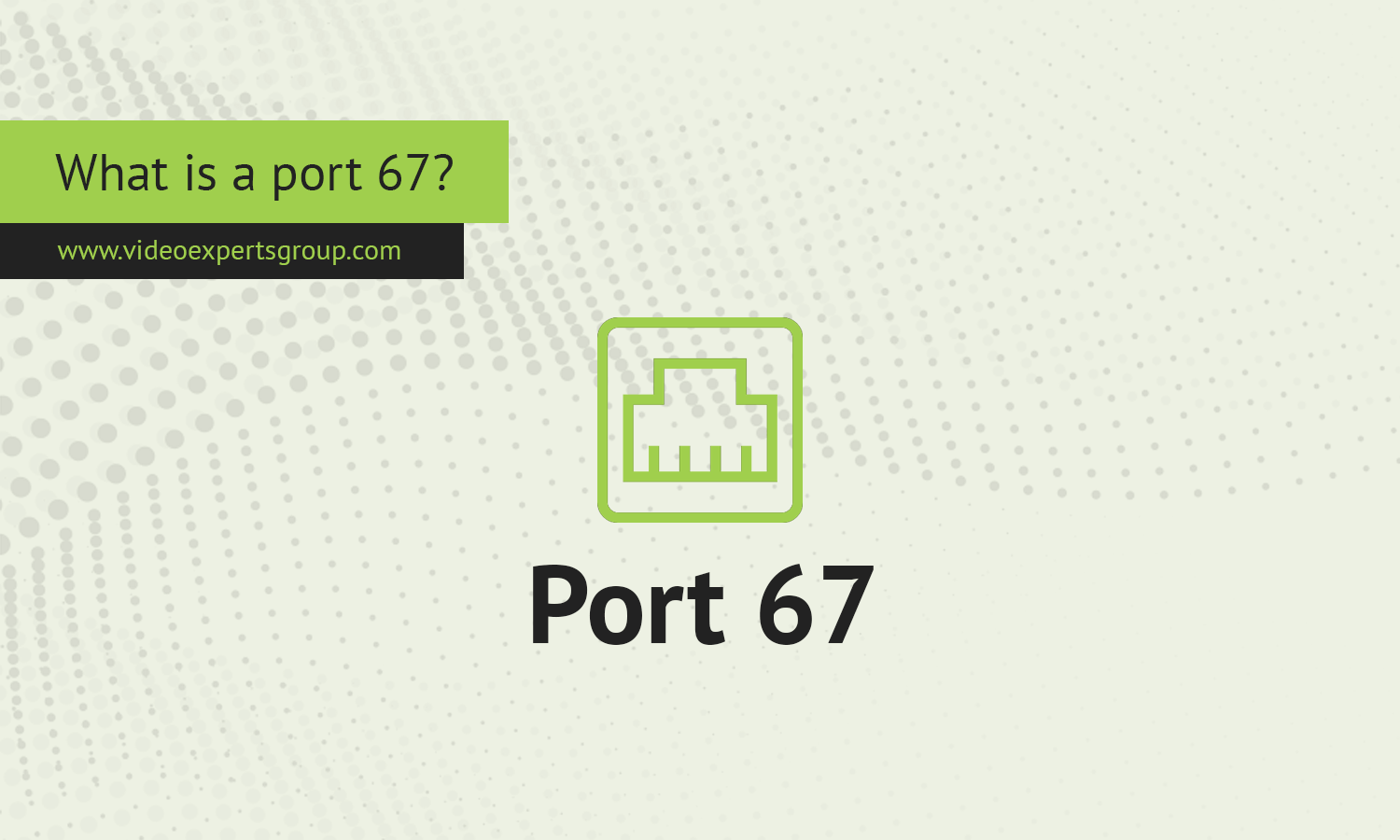In the complex world of networking, devices must be configured correctly to communicate and function within a network. One of the essential processes in this configuration is assigning IP addresses to devices, enabling them to interact with other devices on the network. This process often relies on the Dynamic Host Configuration Protocol (DHCP), which utilizes Port 67 as a key component in its operation. Understanding Port 67 is crucial for anyone involved in networking, as it plays a vital role in the automatic assignment of network configurations.
Meaning
Port 67 is the default port used by the Dynamic Host Configuration Protocol (DHCP) server for receiving client requests. DHCP is a network management protocol used to automatically assign IP addresses, subnet masks, default gateways, and other critical network configuration parameters to devices (clients) on a network. This automated process simplifies network management by eliminating the need to manually configure each device.
When a device connects to a network, it sends a broadcast message, known as a DHCP Discover message, to find an available DHCP server. The DHCP server, listening on Port 67, responds to this request by offering an IP address and other network settings to the device. This exchange allows the device to become part of the network with minimal manual configuration.
What is Port 67 Used For?
Port 67 is primarily used for the following functions within the DHCP process:
-
DHCP Discover and Offer: When a new device connects to a network, it sends a DHCP Discover broadcast message to locate a DHCP server. This message is sent to Port 67. The DHCP server then responds with a DHCP Offer message, also sent from Port 67, proposing an IP address and other network configurations to the client. This interaction is crucial for automatically assigning IP addresses and ensuring that devices can communicate on the network.
-
Initial IP Address Assignment: Port 67 is used in the initial step of IP address assignment. The DHCP server, listening on Port 67, assigns an available IP address to the client device, along with other necessary network settings such as the subnet mask, default gateway, and DNS server addresses. This assignment is temporary and is typically leased for a specific period, after which the client must renew it.
-
DHCP Acknowledgement: Once the client selects the offered IP address, it sends a DHCP Request message to the server to accept the offer. The server, still using Port 67, responds with a DHCP Acknowledgement message, confirming the assignment. This final step completes the IP address assignment process, and the device is fully integrated into the network.
-
IP Address Lease Renewal: DHCP also involves lease renewal, where the client requests to extend its assigned IP address lease before it expires. This renewal process also involves communication over Port 67, ensuring that the device maintains its network configuration without interruption.
Vulnerabilities
While Port 67 and the DHCP process are essential for network configuration, they also present several vulnerabilities that can be exploited if not properly secured:
-
DHCP Spoofing: One of the most significant vulnerabilities associated with Port 67 is DHCP spoofing. In this attack, a malicious actor sets up a rogue DHCP server on the network, which responds to DHCP requests before the legitimate server can. The rogue server can assign incorrect IP addresses, redirect traffic to malicious sites, or provide incorrect DNS settings, leading to network disruptions or man-in-the-middle attacks.
-
Denial of Service (DoS) Attacks: DHCP is vulnerable to Denial of Service (DoS) attacks, where an attacker floods the DHCP server with a large number of bogus DHCP requests. This can exhaust the pool of available IP addresses, preventing legitimate devices from obtaining network configuration and effectively denying them access to the network.
-
IP Address Conflicts: If multiple DHCP servers are unintentionally or maliciously present on the same network segment, they may assign overlapping IP addresses, leading to IP address conflicts. This can cause communication problems, as devices with conflicting IP addresses cannot reliably connect to the network.
-
Information Disclosure: Because DHCP requests and responses are typically unencrypted, they can be intercepted by attackers using packet-sniffing tools. This interception can reveal information about the network, such as the IP address range, subnet mask, gateway, and DNS servers, which can be used for further attacks or network reconnaissance.
-
Unauthorized DHCP Clients: If network access controls are not properly enforced, unauthorized devices could connect to the network and request an IP address from the DHCP server. This could allow rogue devices to gain access to network resources, potentially leading to data breaches or other security incidents.
Port 67 plays a critical role in the automated configuration of network devices through the DHCP protocol. By facilitating the assignment of IP addresses and other network settings, it simplifies network management and ensures devices can communicate effectively on a network. However, Port 67 and the DHCP process are not without vulnerabilities, such as DHCP spoofing, DoS attacks, and IP address conflicts. To maintain a secure network, it's important for administrators to be aware of these risks and implement appropriate security measures, such as DHCP snooping, to mitigate potential threats.
















